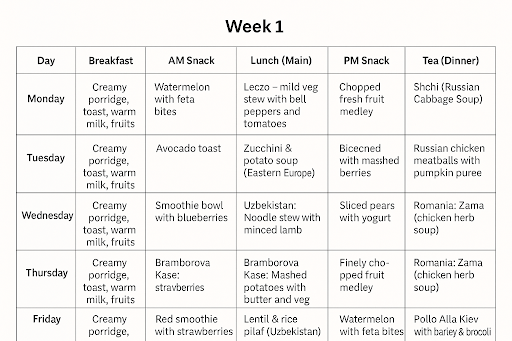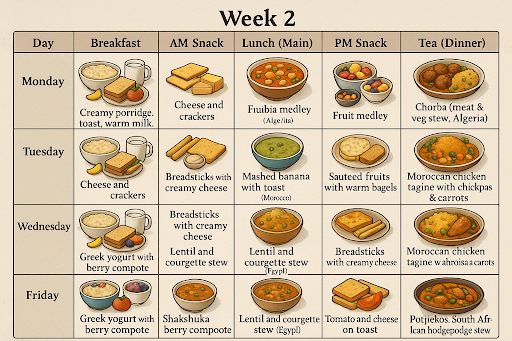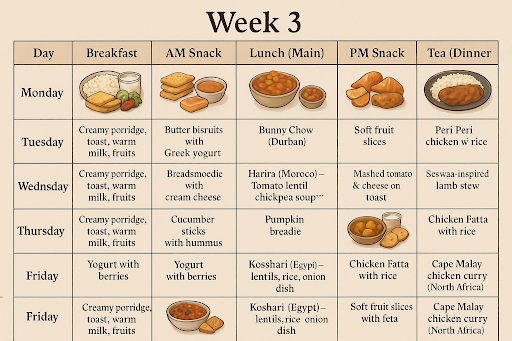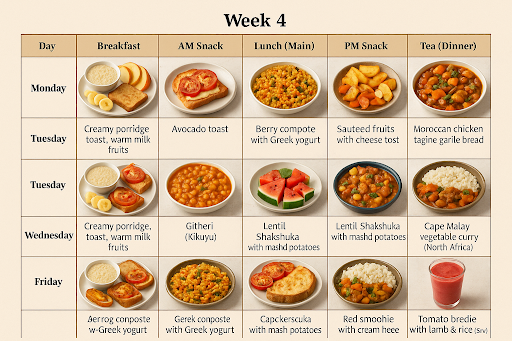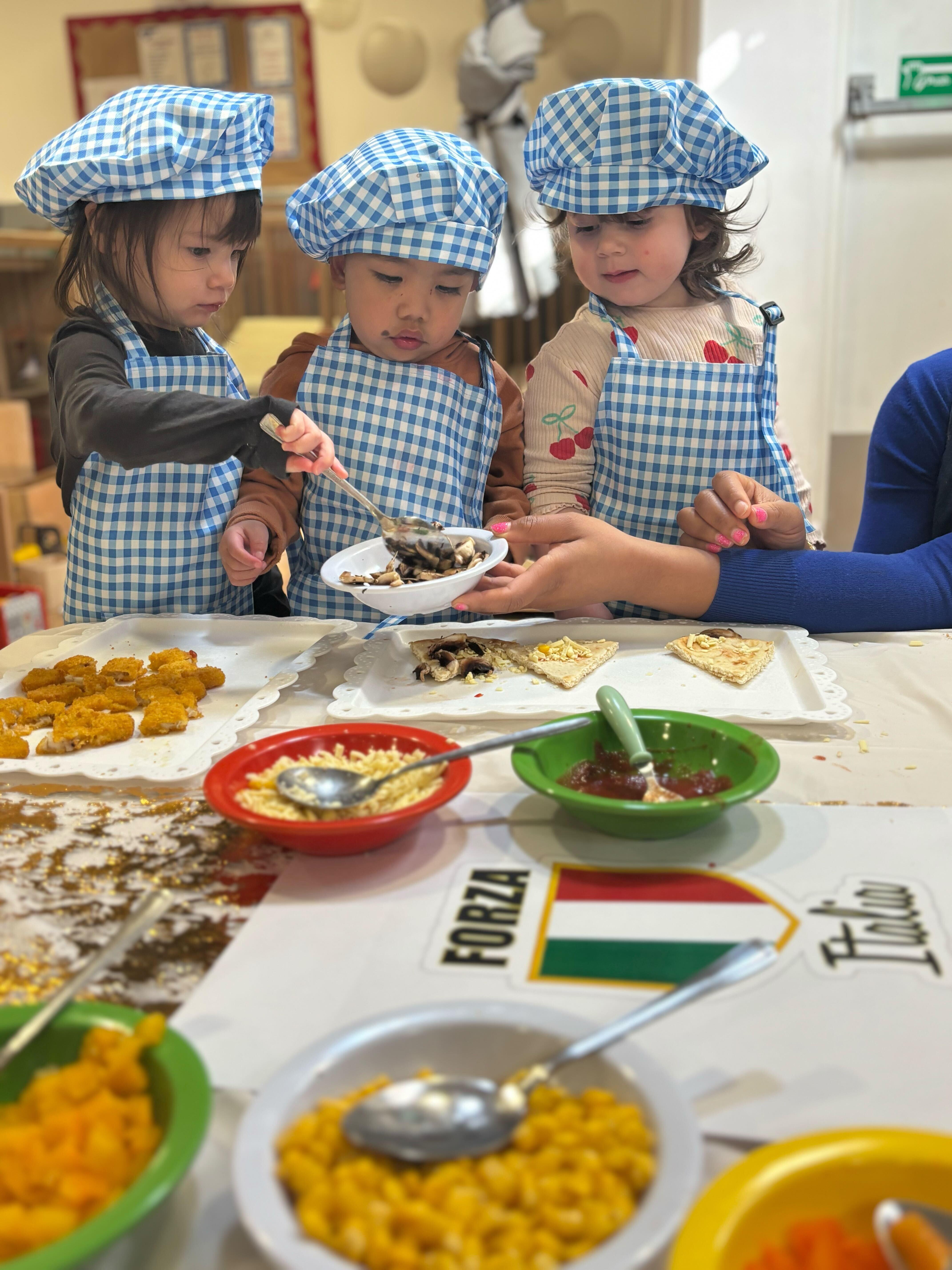At Hatching Dragons, we understand that mealtimes are more than just fuel—they're moments of discovery, connection, and education. Our July nursery menu reflects our mission to foster multicultural awareness and cognitive development through a holistic and engaging early years experience. By introducing African-inspired nursery meals, we’re not only meeting the highest standards of childcare nutrition but also nurturing empathy, curiosity, and global citizenship in our little learners.
Why Food and Nutrition Matter in Childcare
Proper nutrition in childcare settings supports brain development, emotional regulation, and physical growth. At Hatching Dragons, our culturally rich, in-house prepared meals align with best practices in food and nutrition for childcare settings, including:
- Providing balanced meals from all main food groups
- Following a robust nutrition policy in childcare that meets EYFS standards
- Using the food and nutrition pyramid to guide meal planning
- Reinforcing healthy eating habits through repetition and storytelling
We don’t just serve food—we explain it. Every meal is an opportunity to explain the nutritional value of the main food groups in ways children understand. We talk about how carrots help us see, lentils help us grow, and couscous gives us energy to play.
Mapping Our July Menu: A Culinary Journey Across Africa
Our July menu is a flavorful map, guiding children from the warm spices of North Africa to the hearty stews of Southern Africa. Every dish is carefully selected to reflect cultural diversity, nutritional value, and child-friendly flavors.
North Africa: Morocco & Algeria
- Tagine with Chickpeas & Vegetables – A fragrant, slow-cooked stew rich in plant protein and antioxidants.
- Couscous with Seasonal Vegetables – Light and fluffy, this whole grain is packed with selenium and fiber.
- Harira – A comforting tomato and lentil soup loaded with iron, great for children’s cognitive development.
These dishes help introduce food and nutrition sciences by showing how grains, legumes, and vegetables interact to create balanced, flavorful meals.
West & Southern Africa: South Africa & Beyond
- Durban Bunny Chow (Vegetarian Lentil version) – A playful way to serve hearty lentils in bread bowls, making healthy food fun.
- Seshebo – A South African stew using tomatoes, beans, and local spices. High in protein and easy to digest.
- Potjiekos – A slow-cooked dish featuring carrots, potatoes, and lean proteins, ideal for sustained energy release.
These meals support early years global food education by showing that different cultures solve the same nutritional challenges in beautifully diverse ways.
How We Adapt Traditional Recipes for Little Learners
Our menu is crafted by chefs who are trained in food preparation and nutrition specifically for early years. Here's how we make traditional African dishes suitable for toddlers:
- Texture: All meals are designed with soft textures for safe chewing.
- Spice Control: We use warm, aromatic spices in child-safe quantities.
- Allergy-Safe Variants: Each dish has vegan/vegetarian alternatives to meet dietary needs.
- Balanced Plates: Meals follow the food and nutrition pyramid, ensuring every plate includes carbs, protein, fats, and vegetables.
By offering these modified dishes, we create a healthy nursery menu that doesn’t compromise on flavor or education.
Cultural Storytelling at the Table
We integrate food and cultural learning for kids into mealtimes by:
- Telling stories and legends from the regions the food originates
- Using Mandarin and English vocabulary for each dish
- Introducing mealtime songs and rhymes rooted in African traditions
- Celebrating festivals with themed meals and dress-up days
Our approach supports language development, literacy, and emotional intelligence—all through the joy of eating.
A Day on the Plate at Hatching Dragons (July Edition)
Breakfast: Creamy porridge with warm milk, toast, and fresh fruit to start the day with slow-release energy.Lunch Example (North African Day): Harira soup with crusty bread, followed by fruit medley.
Dinner Example (Southern African Day): Potjiekos stew with rice and sautéed vegetables, finished with berry compote.
Snacks are light, colorful, and nutritious—think avocado toast, hummus with rice crackers, and Greek yogurt with fruit.
This routine reinforces structure and supports the physical and emotional wellbeing of children in line with our nutrition policy in childcare.
Common Parent Questions
Q: Why food and nutrition is important in early years?
A: It shapes lifelong habits, supports physical growth, and is essential for cognitive and emotional development.
Q: How do you ensure meals are balanced?
A: We follow government guidance, use the food and nutrition pyramid, and adapt traditional dishes with whole foods.
Q: Do children learn about where their food comes from?
A: Yes, through storytelling, visuals, and linking food to festivals, geography, and values.
Q: What if my child is a picky eater?
A: We offer familiar ingredients in new ways and gently encourage trying, never forcing. Peer influence also helps!
Final Thoughts: Nurturing Global Citizens One Bite at a Time
By offering multicultural nursery food rooted in African culinary traditions, we’re helping children explore the world from their highchairs. Our July menu shows how food can be a bridge to understanding, connection, and health.
At Hatching Dragons, nutrition isn’t just about meals—it’s about food science and nutrition, cultural empathy, and preparing children for a diverse, delicious world.
